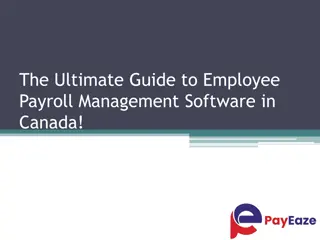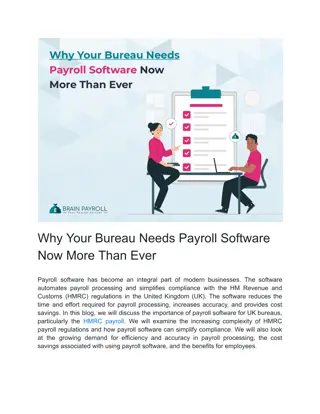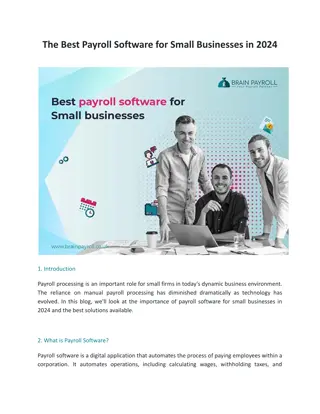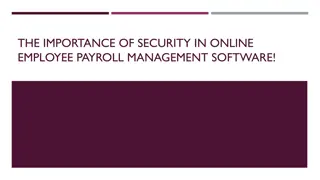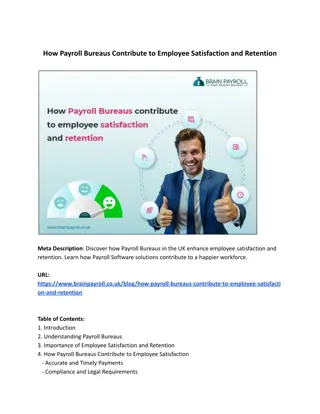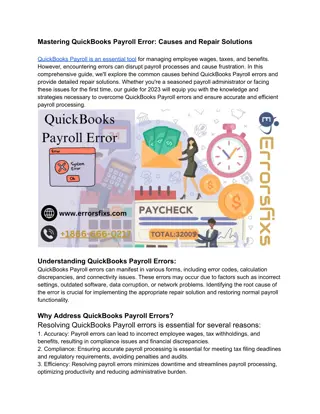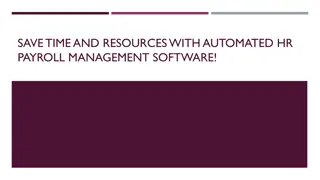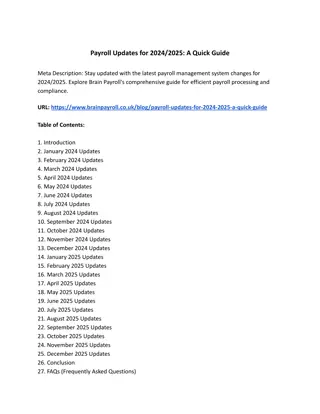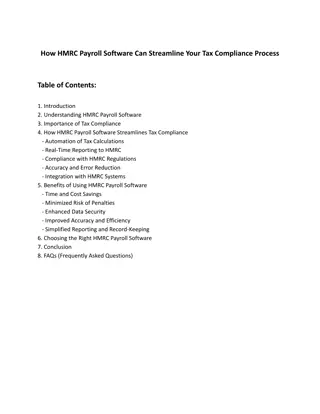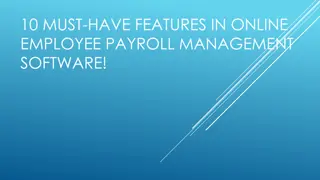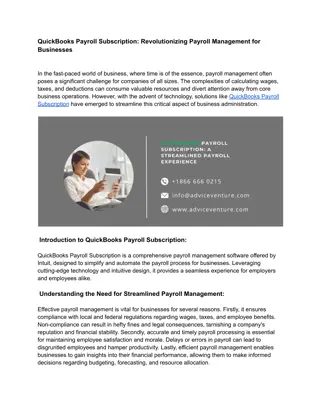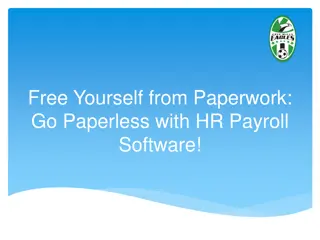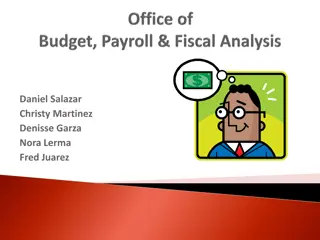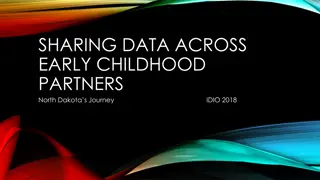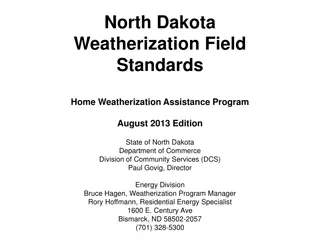South Dakota Payroll Processing FastPay User Guide
Learn about the payroll processing procedures for South Dakota companies using FastPay. Understand the plan selection process, payroll options, and payment methods for SRP 457 and SPP 401(a). Follow step-by-step instructions for managing plans, processing payroll, and submitting contributions.
Download Presentation

Please find below an Image/Link to download the presentation.
The content on the website is provided AS IS for your information and personal use only. It may not be sold, licensed, or shared on other websites without obtaining consent from the author.If you encounter any issues during the download, it is possible that the publisher has removed the file from their server.
You are allowed to download the files provided on this website for personal or commercial use, subject to the condition that they are used lawfully. All files are the property of their respective owners.
The content on the website is provided AS IS for your information and personal use only. It may not be sold, licensed, or shared on other websites without obtaining consent from the author.
E N D
Presentation Transcript
HRM Presented by Dr.Laboni Basu
LIST OF VARIOUS DATA RECORDING SYSTEMS USED IN ORGANIZATION 1. Human Resource Information System (HRIS) 2. Time and Attendance Systems 3. Performance Management Systems 4. Payroll Processing Systems 5. Employee Self-Service Portals 6. Applicant Tracking Systems 7. Learning Management Systems 8. Health and Safety Tracking Systems 9. Employee Surveys and Feedback Systems 10. Employee Performance Analytics
HUMAN RESOURCE INFORMATION SYSTEM (HRIS) Human Resource Information System (HRIS): HRIS is a software solution that combines a number of systems and processes to ensure the easy management of human resources, business processes, and data. It processing, performance management, and talent management. typically includes employee features benefits such as payroll administration,
TIME AND ATTENDANCE SYSTEMS Time and Attendance systems are used to track and record the hours that employees work and also provide tools to manage employee scheduling, overtime, paid time off, and attendance policies. This data is used for payroll processing and compliance with labor laws. Systems: These
PERFORMANCE MANAGEMENT SYSTEMS Performance Management Systems: These systems are used to track and evaluate the performance of employees. They may include features for setting and tracking goals, conducting reviews, and providing employees. performance feedback to
PAYROLL PROCESSING SYSTEMS Payroll Processing Systems: These systems are used to calculate and process employee wages, including deductions benefits, and other withholdings. for taxes, Payroll processing systems are also used to generate reports and comply with legal and regulatory requirements.
EMPLOYEE SELF-SERVICE PORTALS Employee organizations have self-service portals that allow employees to access their personal information, such as pay stubs, benefits information, and time-off requests. These portals can reduce the administrative burden on HR staff and give employees more control over their own data. Self-Service Portals: Many
APPLICANT TRACKING SYSTEMS Applicant Tracking Systems: These systems are used to manage the recruitment and hiring process. They typically include features for posting job openings, managing applications, interviews, and conducting background checks. scheduling
LEARNING MANAGEMENT SYSTEMS Learning Management systems are used to manage employee training and development. They may include features for creating and delivering training content, tracking employee progress, and evaluating the effectiveness of training programs. Systems: These
HEALTH AND SAFETY TRACKING SYSTEMS Health and Safety Tracking Systems: In industries where health and safety are a concern, organizations may use specialized systems to track and manage employee health and safety data. This can include recording incidents, tracking safety training, and ensuring compliance with regulations.
EMPLOYEE SURVEYS AND FEEDBACK SYSTEMS Employee Surveys and Feedback Systems: Many organizations use survey and feedback systems to gather information from employees about their experiences at work. This data can be used to identify areas for improvement and engagement. measure employee
EMPLOYEE PERFORMANCE ANALYTICS Employee Performance Analytics- Organizations use data analytics tools to analyze employee performance identify trends and patterns. This can help organizations informed decisions about hiring, training, and workforce planning. data and make more


